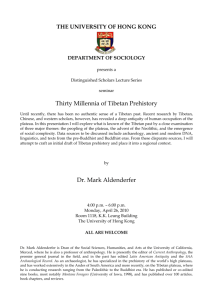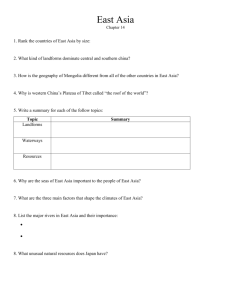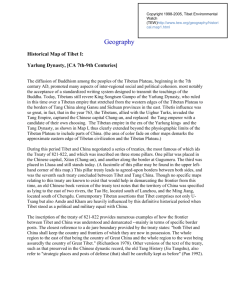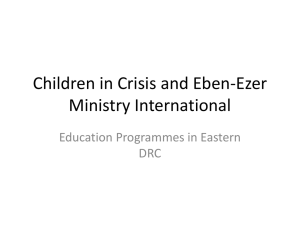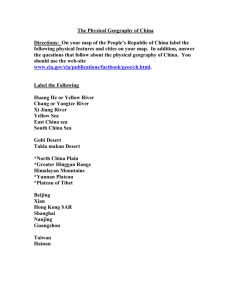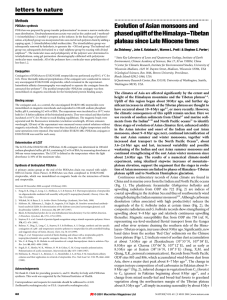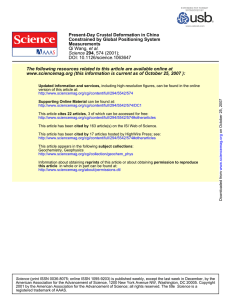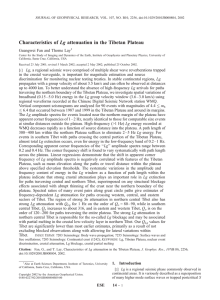CEOP HYDROLOGY REFERENCE SITES: Naqu (Drainage areas ~100 km )
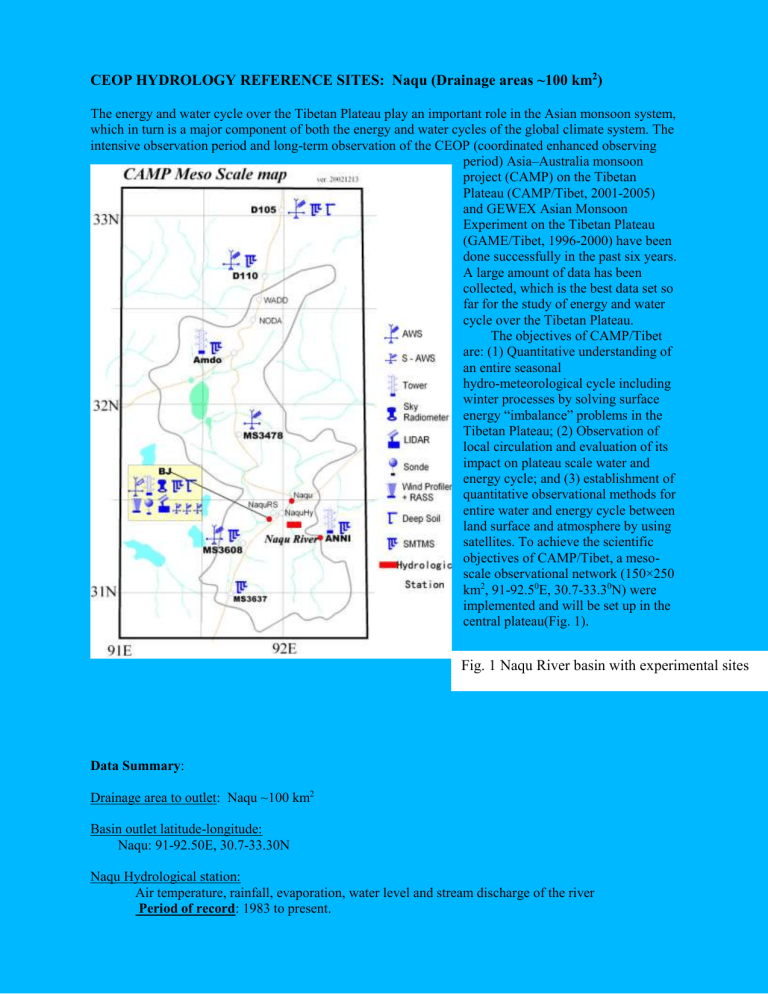
CEOP HYDROLOGY REFERENCE SITES: Naqu (Drainage areas ~100 km
2
)
The energy and water cycle over the Tibetan Plateau play an important role in the Asian monsoon system, which in turn is a major component of both the energy and water cycles of the global climate system. The intensive observation period and long-term observation of the CEOP (coordinated enhanced observing period) Asia–Australia monsoon project (CAMP) on the Tibetan
Plateau (CAMP/Tibet, 2001-2005) and GEWEX Asian Monsoon
Experiment on the Tibetan Plateau
(GAME/Tibet, 1996-2000) have been done successfully in the past six years.
A large amount of data has been collected, which is the best data set so far for the study of energy and water cycle over the Tibetan Plateau.
The objectives of CAMP/Tibet are: (1) Quantitative understanding of an entire seasonal hydro-meteorological cycle including winter processes by solving surface energy “imbalance” problems in the
Tibetan Plateau; (2) Observation of local circulation and evaluation of its impact on plateau scale water and energy cycle; and (3) establishment of quantitative observational methods for entire water and energy cycle between land surface and atmosphere by using satellites. To achieve the scientific objectives of CAMP/Tibet, a mesoscale observational network (150×250 km 2 , 91-92.5
0 E, 30.7-33.3
0 N) were implemented and will be set up in the central plateau(Fig. 1).
Data Summary :
Drainage area to outlet: Naqu ~100 km 2
Fig. 1 Naqu River basin with experimental sites
Basin outlet latitude-longitude:
Naqu: 91-92.50E, 30.7-33.30N
Naqu Hydrological station:
Air temperature, rainfall, evaporation, water level and stream discharge of the river
Period of record : 1983 to present.
Precipitation gauges: There are raingauges at all sites in Naqu located in fig 1.
Period of record : October 2001 to present.
Vegetation: very short grasses (<10 cm) in the monsoon season.
Micrometeorological data:
Naqu: Net radiation, downward and upward shortwave radiation, downward and upward longwave radiation, wind speed and direction, surface temperature, soil temperature, soil moisture, soil heat flux, snow depth, air temperature, relative humidity, pressure, and precipitation.
Period of record: October 2001 to present.
Turbulent flux measurements:
Naqu: The turbulence data observed with a sonic anemometer-thermometer and an infrared hydrometer in Naqu.
Period of record : October 20011-present with some gaps.
Soil moisture:
Naqu: Nine Soil moisture and soil temperature (SMTMS) sites in this area, with probe at 4cm,
20cm,40cm, 60cm, 80cm, 100cm, 130cm, 160cm and 200cm below earth surface.
Period of record: October 2001 to present.
Other measurements:
Naqu: LIDAR system, a Wind Profiler, a radiosonde system have been set up at this station ; A three-dimensional Doppler radar and the air borne microwave radiometer.
Period of record : October 20011-present with some gaps.
Contacts: Prof. Yaoming MA (ymma@ns.lzb.ac.cn)
Phone: +86-931-4967079
Fax: +86-931-4967079



